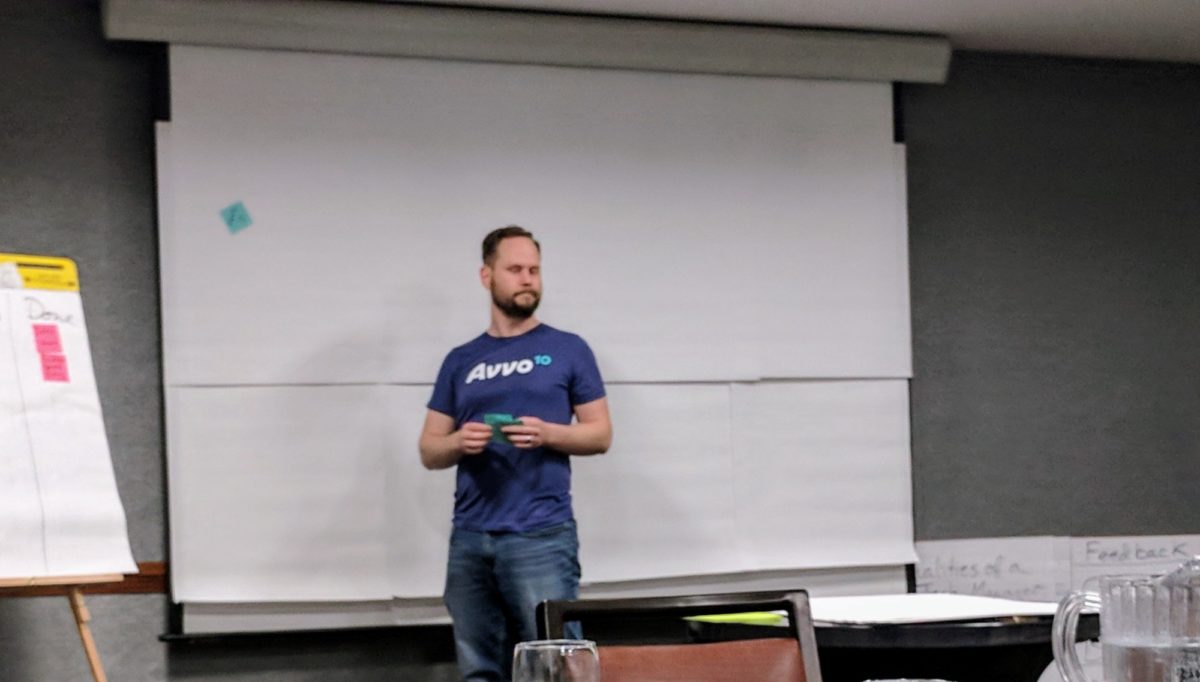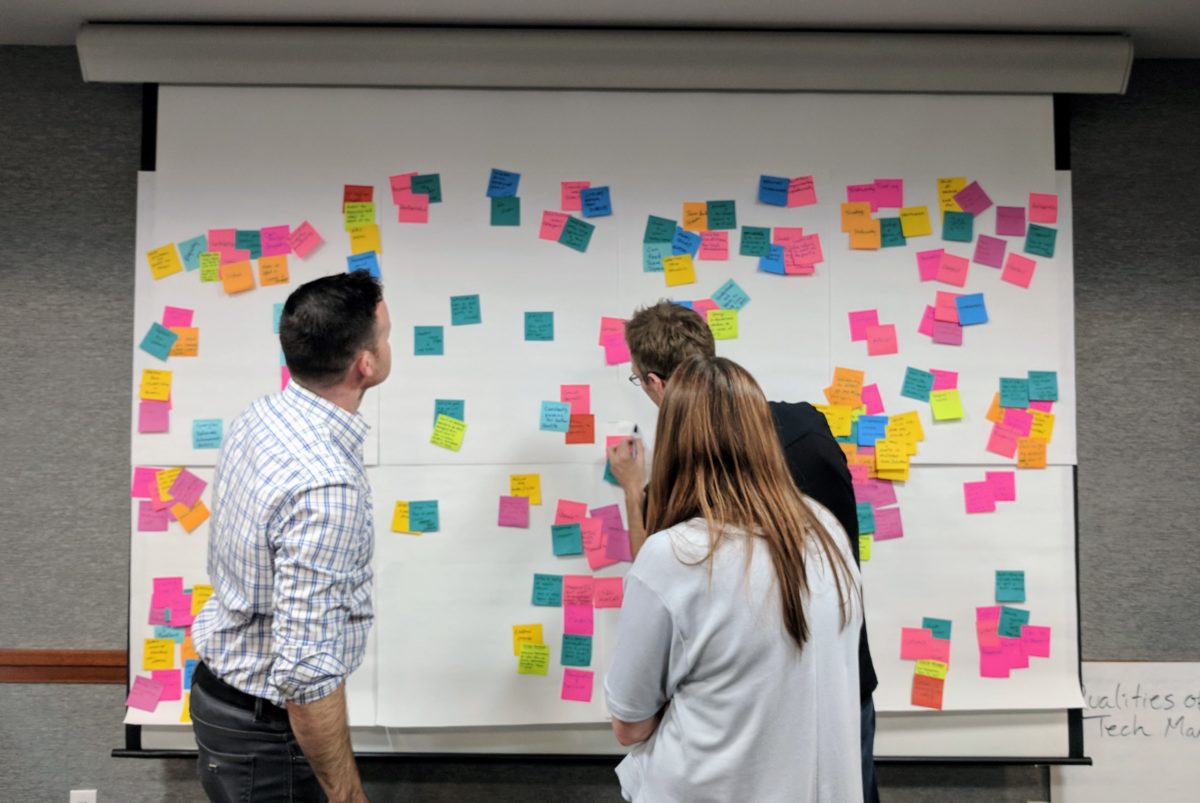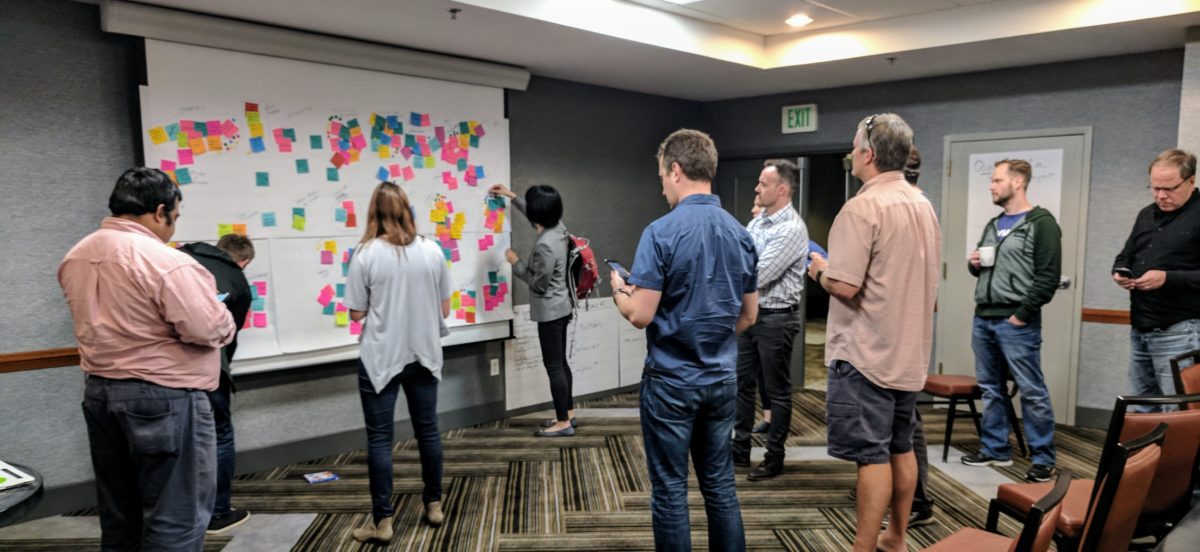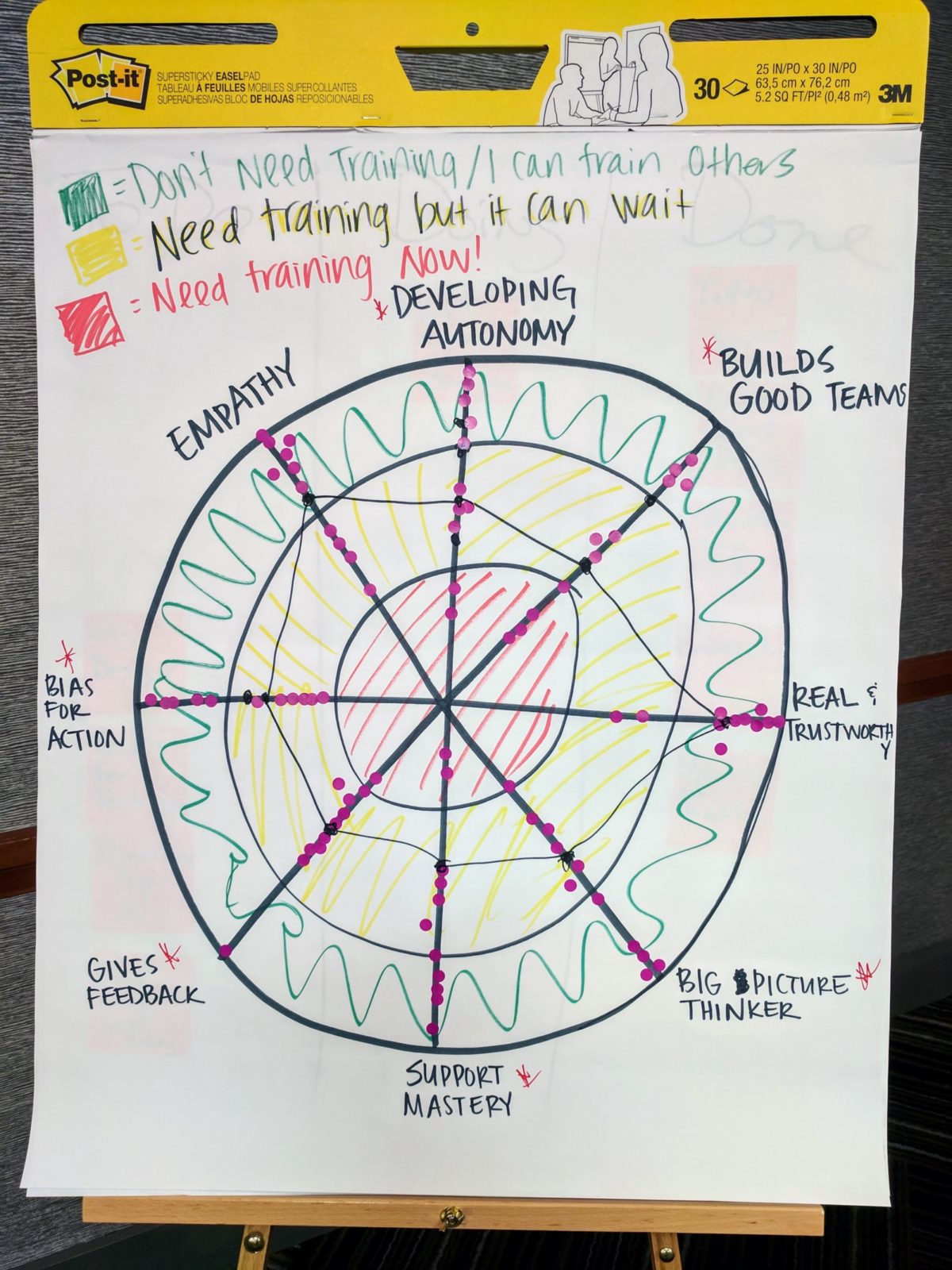[This is a repost of http://engineering.avvo.com/articles/building-a-management-training-curriculum-at-avvo.html]
This week, we kicked off manager training for Avvo technology managers. Before we could build a curriculum, we needed to decide what was important to learn and where we as a group needed the most development.
If I had done this with my organization at Adobe, years ago, I might have made a list of capabilities or requirements for our roles and then assessed each person against those requirements. I’ve since learned that the top-down approach tends to isolate and alienate people. It is something done TO them. They don’t feel investment or ownership of the process. If they disagree with the list or my assessment of them, it is hard to challenge due to the nature of the process.
When I was at Spotify, I worked with Paolo Brolin Echeverria and Mats Oldin to build manager training for my Tribe. They developed an excellent kick-off exercise that I repurposed for my team at Avvo.
The process is straightforward.
We began by individually thinking about the qualities of a good leader in our organization. We each wrote every important quality we could think of onto individual post-its. This effort took about 20 minutes. Then, one by one, we put each of our post-its onto a large board. As we placed each quality, we explained why we believed it was important for a leader at Avvo.

When we finished putting all of our post-its on the board, we affinity-grouped them. Affinity-grouping resulted in 30 groups of similar qualities as well as a few individual post-its that did not fit into any group. The grouping process required a lot more discussion so that we could all agree on the final groupings.

At this point, we had collectively described 30 essential qualities of a leader at Avvo, which is far too many to effectively focus on. To narrow things down, we each received six votes to put towards any group of qualities that we felt were the most critical. Then, we tallied the votes and took the top eight as our core qualities of a manager at Avvo.
The voting process also led to a lot of valuable discussions as we saw where we had voted as a group. Were these right eight? Were they the most important eight? The eight qualities that we picked were: empathy, develops autonomy, builds good teams, is real and trustworthy, is a big picture thinker, supports mastery, gives feedback, and has a bias for action.

Individually, we then assessed ourselves against the eight core qualities on a three-point scale: “I need training on this,†“need training, but it can wait,†and “I can train others on this.†One by one, we went up to a board that had the eight qualities mapped on a spider graph. We put dots on a line for each quality where we rated ourselves. We explained why we chose that assessment. This led to further good discussion about how to assess ourselves against these qualities.

The group as a whole found this exercise to be very valuable. We had excellent discussions on what it means to be a good leader at our company, including the values we agree on, and the ones that we don’t. We were also able to prioritize those collectively in a way that everyone feels ownership and allegiance to them.
And we came to an understanding of where we need to develop the most as a group. This mutual understanding will inform the curriculum for our management training – my original goal.
